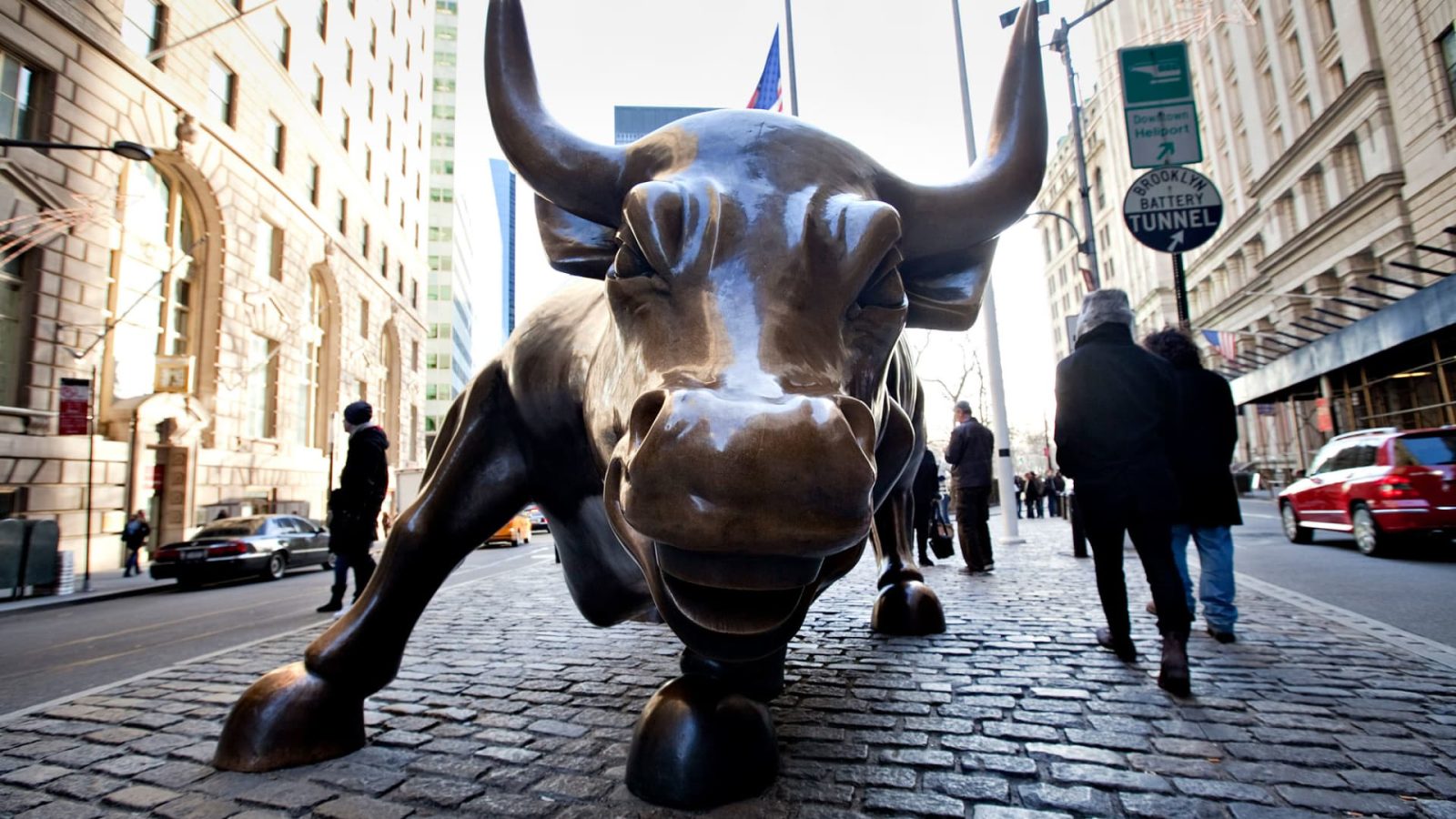The major stock averages bounced back Friday, despite the release of a stronger-than-expected U.S. jobs report and another jump in Treasury yields. Investors initially dumped stocks and bond rates spiked after the Labor Department reported the U.S. economy added 336,000 jobs in September, nearly double the consensus. But stocks recovered as bond yields leveled out through the day. It was enough to put both the S & P 500 in the black for the week, breaking the broad market index’s four-week streak of losses. The Nasdaq rose 1.2% and the Dow slid slightly for the week. Why the reversal? We believe one key data point in the jobs report was (at first) undervalued: Wages increased less than expected. In our view, strong hiring with moderating wage growth could be nirvana for the economy and stocks. Accelerating wage growth has been one of the stickiest problems for the Federal Reserve in its fight against inflation. If it can come down while still adding jobs, we may have that soft landing — or no landing — for the economy. @CL.1 YTD mountain WTI year to date performance Another positive: Oil prices have cratered in October after surging more than 28% in the third quarter. Even with a modest bounce Friday, U.S. crude prices fell nearly 9% this week — their worst weekly performance since March. That’s important for two reasons. First, energy prices compete with discretionary dollars. The more consumers spend on filling up their cars with gas, the less they have to spend at the mall. Second, energy costs impact inflation (even if the Fed relies primarily on the core PCE index because it strips out energy and food prices). After all, energy is a major input cost for companies. If those companies want to protect profits when oil prices are rising, they will pass those costs to the consumer. So, the job market remains strong, wage inflation is slowing and energy prices are coming back down to Earth. Interest rates are still high, but the speed of change matters more than the absolute level. We need to go slow. Companies and borrowers can adjust to a higher level, but swift changes in those levels make it difficult to lend and borrow. Moreover, the level of inversion of yields for the 2-year and 10-year Treasury notes — a sign of recession to many — has weakened in recent weeks. The spread reverting to normal levels — yields on the longer-term bond higher than the shorter one — would be a major boon for the bulls. US10Y YTD mountain 10-year Treasury yield year to date performance Here are three major developments to watch in the week ahead. Inflation data: The producer price index (PPI) is out on Wednesday. The consumer price index (CPI) is out on Thursday. The CPI certainly carries more weight as the Fed is more concerned with what consumers are paying than with the input costs of those goods. That said, high input costs can ultimately translate into higher selling prices as businesses look to protect profits. So it’s important that we don’t see a reading too much hotter than what economists are predicting for either one. September headline PPI is expected to rise 0.3% month over month and 1.6% year over year. The core rate is seen rising 0.2% month over month and 2.3% year over year. Those annual figures are largely on par with the Fed’s target so anything inline should be fine for the market. We don’t want something so hot as to spark fears of resurgent inflation at the wholesale level, or anything so weak so as to spark fears that we’re in for a hard landing. As for CPI, economists are looking for a September headline reading of up 0.3% month over month and 3.6% year over year. Core CPI is expected to rise 0.3% month over month and 4.1% year over year. Should these predictions play out, both would represent a deceleration, on an annual basis, versus what we saw in August. However, as both core rates are above the Fed’s 2% target rate, additional weakness would be welcome here. Anything above these predictions is likely to be taken as a negative by the market as it could very well cause a further rally in bond yields, which on the 10-year hit a high back to 2007. The headline and core readings are not the end all be all. We’ll also be focused on the shelter index, which represents about a third of the total CPI. Remember, housing costs have been a real thorn in the Fed’s side as a lack of supply has served to keep prices elevated even as mortgage rates spike. Bank earnings : Club name Wells Fargo (WFC) is among the bank kicking off third-quarter earnings season this coming Friday. In addition to high-level commentary on the state of the economy and consumer savings levels and spending habits, we’ll be listening closely for an update on the bank’s commercial real estate exposure and the impact higher rates have had on deposits and lending activity. Major banks, especially national ones like Wells Fargo, are uniquely positioned to provide real-time insight on the economy as they have access to every level of money flow from consumer debit and credit cards to corporate spending plans. Banks’ post-earnings calls should be viewed as important: they give investors the best look at business for the next quarter and in 2024. While we don’t own JPMorgan Chase (JPM), we’ll be curious to hear what CEO Jamie Dimon has to say on his own conference call, which will also take place on Friday along with several other financial institutions. Our other Club bank, Morgan Stanley (MS), is set to report its quarter on Oct. 18. Fed minutes : The minutes from the Fed’s September meeting are out Wednesday afternoon. But we’ll be hearing from Fed officials throughout the week. Expect their comments to result in some volatility here and there but keep focused on the data — as ultimately, we hope central bankers will allow the data to drive their actions when it comes to monetary policy. The September meeting saw a pause in interest rate hikes. But one more hike this year was projected with just a November and a December meeting left. They also forecasted fewer rate cuts next year. The translation: higher rates for longer. But a lot can change between now and the November meeting. Here’s the full rundown of all the important domestic data in the week ahead as we contemplate our next moves for the portfolio. This week, we made six trades , two ratings changes and one Bullpen add. Tuesday, Oct. 10 Before the bell earnings: PepsiCo (PEP) Wednesday, Oct. 11 8:30 a.m. ET: Producer Price Index 2 p.m. ET: FOMC Minutes Thursday, Oct. 12 8:30 a.m. ET: Consumer Price Index 8:30 a.m. ET: Initial jobless claims Before the bell: Delta Air (DAL), Walgreens Boots Alliance (WBA), Commercial Metals (CMC), Domino’s Pizza (DPZ), Fastenal (FAST), Infosys Tech (INFY) After the bell: SMART Global (SGH) Friday, Oct. 13 Before the bell: Wells Fargo (WFC), JPMorgan Chase (JPM), Citigroup (C), BlackRock (BLK), Progressive (PGR), PNC Financial (PNC) (See here for a full list of the stocks in Jim Cramer’s Charitable Trust.) As a subscriber to the CNBC Investing Club with Jim Cramer, you will receive a trade alert before Jim makes a trade. Jim waits 45 minutes after sending a trade alert before buying or selling a stock in his charitable trust’s portfolio. If Jim has talked about a stock on CNBC TV, he waits 72 hours after issuing the trade alert before executing the trade. THE ABOVE INVESTING CLUB INFORMATION IS SUBJECT TO OUR TERMS AND CONDITIONS AND PRIVACY POLICY , TOGETHER WITH OUR DISCLAIMER . NO FIDUCIARY OBLIGATION OR DUTY EXISTS, OR IS CREATED, BY VIRTUE OF YOUR RECEIPT OF ANY INFORMATION PROVIDED IN CONNECTION WITH THE INVESTING CLUB. NO SPECIFIC OUTCOME OR PROFIT IS GUARANTEED.
The major stock averages bounced back Friday, despite the release of a stronger-than-expected U.S. jobs report and another jump in Treasury yields.
Read the full article here









Leave a Reply